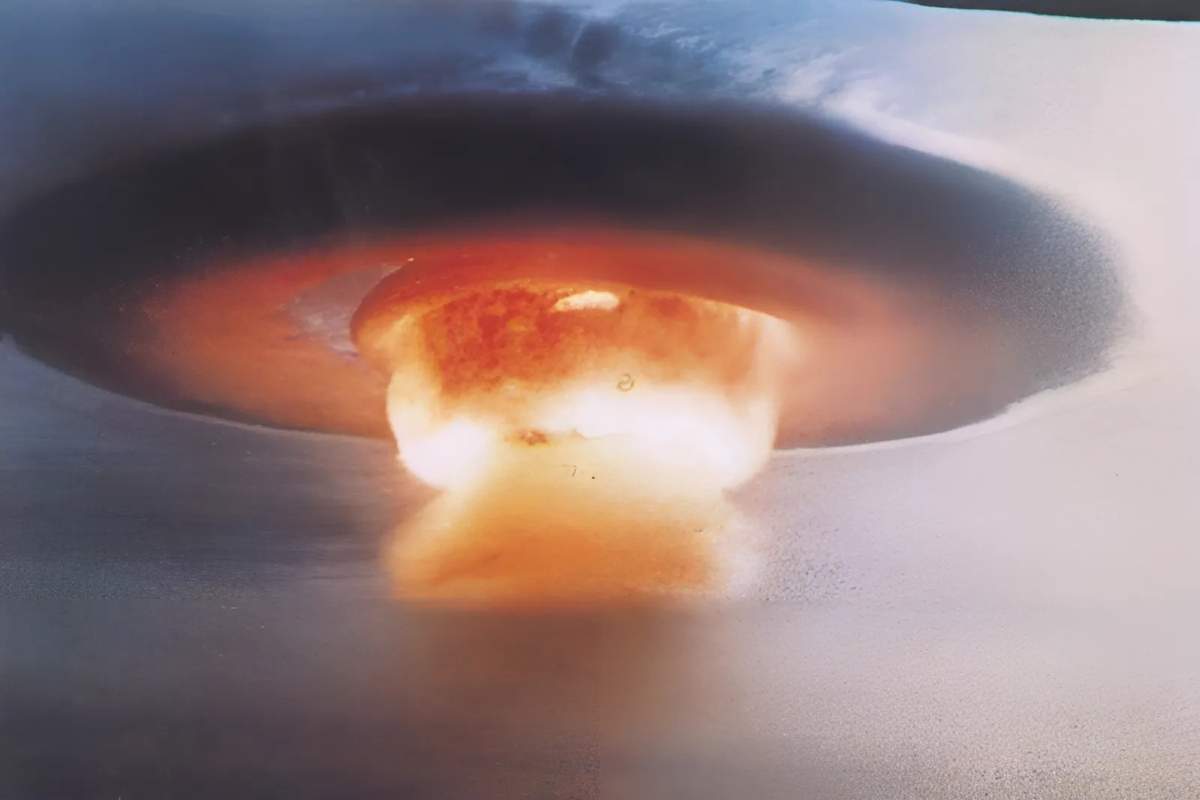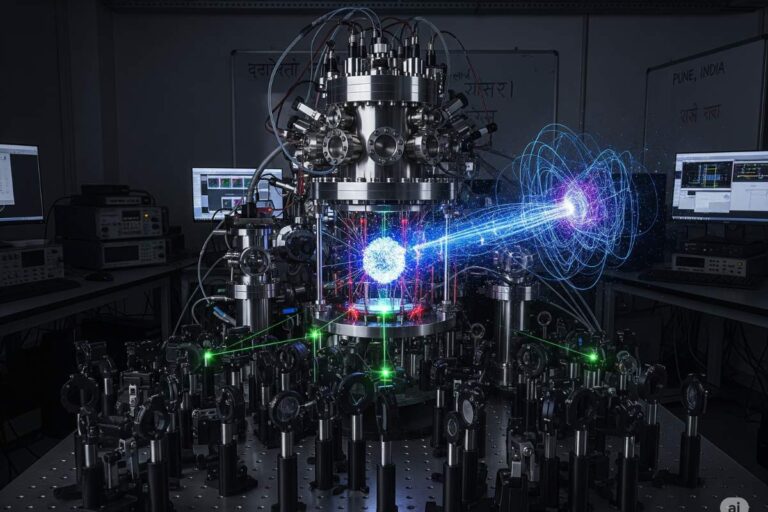Traditional hydrogen (“H‑bomb”) weapons employ a fission primary to implode and burn fusion fuel, releasing gigantic energy through nuclear processes, and necessarily generating harmful radiation. Non‑nuclear thermobaric or fuel‑air explosives, on the other hand, spread a fuel aerosol that subsequently burns in oxygen from the air, producing sustained blast waves and high temperatures without using fissile materials. China’s most recent experiment goes even further from the traditional FAE model in using a solid hydrogen storage compound, magnesium hydride, which releases hydrogen during a rapid thermal decomposition process, forming a self‑sustaining combustion cycle when triggered by a small conventional initiator
Why Magnesium Hydride?
Magnesium hydride has an unusually high volumetric hydrogen density compared to pressurised gas or liquid carriers, allowing compact storage and instant release when heated. New developments at a Shaanxi manufacturing plant have increased MgH₂ production from gram‑per‑day laboratory yields to 150 tonnes per year, allowing for large‑scale munitions manufacture. The fine powder particle size and high reactivity upon shock‑fracture under detonation conditions contribute to the maintenance of the thermal decomposition and ensuing hydrogen combustion, the foundation of the device’s high thermal yield.
Technical Details of the Test
Device Specifications
- Manufacturer: CSSC 705 Research Institute, a main subsidiary of the China State Shipbuilding Corporation that specializes in underwater and energetic materials research
- Weight: A small 2 kg total weight, a lightweight yet powerful ordinance alternative.
- Composition: About 1.4 kg of MgH₂ powder contained in an aerated dispersion casing, supplemented by a 600 g traditional booster charge for initial activation
Field Test Setup
The test, which was carried out at a remote range in western China, used high‑speed infrared thermography and blast sensors to define the performance of the device. Various optical pyrometers captured surface temperatures, and pressure gauges at predetermined distances recorded overpressure peaks. The results provide both the thermal and shock‑wave profiles essential in operational planning.
Measured Performance
- Fireball Temperature & Duration: Over 1,000 °C (1,832 °F) for over two seconds, roughly 15 times longer than a TNT explosion of the same weight, which usually maintains maximum fireball temperature for ~0.12 seconds.
- Overpressure: Maximum overpressure to ~428 kPa at two metres, around 40 % of a TNT charge’s overpressure, but with thermal radius more than doubled, making heat‑dominant damage possible while minimizing terrain cratering.
- Combustion Dynamics: First shock wave shatters MgH₂ particulates, revealing new surfaces; resulting hydrogen quickly ignites and burns surrounding hydride, generating a heat‑driven release and combustion feedback cycle
Operational Capabilities and Applications
Area Denial and Thermal Suppression
The bomb’s large fireball makes it perfect for area‑denial applications, burning open‑field troop groups, incapacitating unarmoured vehicles, or building “thermal curtains” to shut off entry points. Its flash and heat wave appearing high make it able to drive dismounted troops to find cover, retarding the progress of enemies without leaving any residual contamination.
Infrastructure Neutralisation
Concentrated targeting on decisive nodes, bridges, fuel storage, radar sites, provides pinpoint aiming: the fierce heat warps structural metals, burns cached fuel, and overwhelms sensitive electronics, all without producing big craters that delay follow-on maneuver
Special Operations and Urban Warfare
Weighing only 2 kg, the device can be man‑portable or deployed on small drones, providing clandestine insertion capabilities. Its chemical signature and absence of radioactive tracer material reduce detection risk over nuclear or heavy conventional ordnance.
Strategic and Geopolitical Implications
PLA Modernisation Efforts
China’s 2025 defence budget, increased by 7.2 % to USD 249 billion, focuses on next‑generation munitions, integration of renewable energy, and expeditionary warfare capabilities.
The hydrogen bomb test aligns with wider initiatives to harness China’s expanding clean-energy, industryhydrogen, solar, and battery technology, to improve operational sustainability and mitigate logistical weaknesses.
Regional Arms Dynamics
By introducing advanced thermochemical weapons, China could encourage similar research on the part of regional powers like India, Japan, and South Korea. Russia’s “Father of All Bombs” (FOAB) and American thermobaric missiles already influence doctrines on fuel-based explosives; China’s MgH₂ method introduces a new dimension to the arms race in high-temperature, non-nuclear ordnance.
Deterrence and Escalation Risks
Though the device is not nuclear yield, its reputed novelty and force may escalate tensions, particularly across the Taiwan Strait and South China Sea. Critics might view deployment as indicating readiness to employ weapons of extreme heat in populated or disputed areas, threatening the fear of quick escalation.
Environmental and Ethical Implications
Radioactive Contamination Avoidance
The chemical-only reactions avoid ionising radiation effects on ecosystems, making long‑term environmental damage less severe compared to nuclear weapons
Humanitarian Concerns
But thermobaric and thermochemical explosives pose serious threats to civilians: long‑duration heat can induce sudden-onset burns, and the post‑detonation vacuum can implode lung tissue in exposed victims. Human‑rights groups highlight strict rules of targeting to prevent indiscriminate civilian death, especially in urban areas.
Policy and Regulation
Today, there is no treaty at the international level that expressly forbids thermochemical or thermobaric weapons. However, increasing pressure, led by the International Committee of the Red Cross and other nongovernmental organizations, demands new norms to restrict extensive‑area, heat-based weapons that create gray areas between conventional and nuclear‑scale destruction.
Conclusion
China’s test of a non‑nuclear hydrogen bomb is a watershed in the development of high‑energy weapons, combining advanced materials science and military strategy to produce nuclear‑like thermal effects without radiation. As the technology advances, defence planners everywhere need to rethink doctrines on area denial, infrastructure targeting, and urban warfare. At the same time, ethical and legal frameworks will be challenged: can states deploy such powerful non‑nuclear capability responsibly, or will the mere existence of the weapon drive conflict to ever more devastating ends?






















